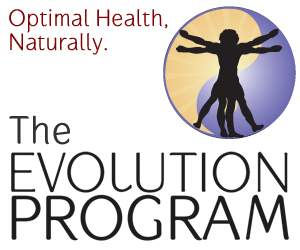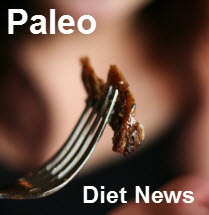Fat Phobia on the Paleo Diet
It’s gratifying that the paleo diet and lifestyle are becoming better known and increasingly discussed as a way of achieving vibrant health. However, a concerning trend is becoming more and more apparent - namely, that of paleo pundits advising that the diet is based around the consumption of lean meats. This recent article is a case in point. It says:
Lean meat, fresh fruit, seafood, eggs, and vegetables are the primary elements of the Paleo diet program.
Lean meat? Really? Are we to believe then that our paleo ancestors suffered from a fat phobia too, and favoured the lean portions of the animals they hunted? In reality, nothing could be further from what we know to be the truth of hunter-gatherer food practices. Indeed, most of the key people who have described the diets of primitive peoples - Stefansson, Cabeza de Vaca, Hearne, Price - have described the specific emphasis these groups placed on animal fats.
It makes sense that animal foods rich in fat would be the basis of ancestral diets, since the fatty meat provided proportionately the highest amount of energy and nutrition. Primitive hunter-gatherers would go for the most nutrient-dense parts of the animal, in the full understanding that the timing of their next meal could be uncertain. The fat, the entrails, the bones, the contents of the stomach, the organ meats - these were the “sacred foods” they revered.
Here’s an account by John Lame Deer, a full-blooded Sioux, of the kind of foods that had the most beneficial effect on the health of his tribe:
We always had plenty of food for everybody: squaw bread, beef…pemmican which was meat pounded together with berries and kidney fat. In the old days, we used to eat the guts of the buffalo, making a contest of it, two fellows getting hold of a long piece of intestines from opposite ends, starting chewing toward the middle, seeing who can get there first. That’s eating. Those buffalo guts, full of half-fermented, half-digested grass and herbs, you didn’t need any pills and vitamins when you swallowed those.
Mary Enig, Ph.D - Pioneer in lipid research. Photo courtesy of Wikipedia.
This notion that paleo eating should be based around lean meats is most likely derived from the prevailing wisdom that fat is somehow inherently bad, and it takes no account of the differences between types of fats. Removing healthy, natural fats from the paleo diet isn’t going to make it “even better”. In fact, it’s likely to make it a whole lot worse, because the level of protein in the diet is going to become proportionately greater. Disproportionately high levels of proteins, unregulated by the fats that nature has designed to be eaten with them, are implicated in deficiencies in certain nutrients such as Vitamin A, and even in creating heart disease. There is a dark irony in the notion that a fat phobia might be a contributory factor in the increase in heart disease in recent decades.
Interested in pursuing the paleo diet? Then educate yourself about the role of fat in the diet. There could be no better place to start than in the work of Dr. Mary Enig, a woman whose work is largely responsible for raising awareness of the role that dangerous trans fats have played in the creation of disease. An in-depth primer on fats, written by Dr. Enig, can be found here.
Her advice on the fats to avoid is simple and clear, and it doesn’t preclude the natural fats that occur in healthy animal - and some vegetable - products. Here’s a quote from her book Know Your Fats:
Fats and oils to be avoided, in addition to partially hydrogenated vegetable fats, include any rancid or over-heated fats that contain break-down products, such as oxidized fatty acids, oxidized sterols, peroxides, acrolien, hydrocarbons and aromatic compounds. These types of abused fats and oil are not safe. They range from immediately toxic to chronically toxic. Free radicals can form in polyunsaturated oils during industrial processing. These can interact with sulfhydryl groups in proteins as well as with unsaturated fatty acids and are very destructive of cell membranes.
Of all the natural fats, it is saturated fat which is undoubtedly the most demonized. Yet, saturated fat is vital to human nutrition. It’s a critical factor in the integrity of our cell membranes, a necessary ingredient in the bodily manufacture of hormones, and a key component of our brains. If we don’t ingest it in the diet, our body will make it from the carbohydrates we consume. Some researchers believe that a deficit in dietary fat can create cravings for refined carbohydrates.
Dr. Enig outlines the multitudinous benefits of good quality saturated fats in another article, here. In it, she says:
Saturated fats from animal and vegetable sources provide a concentrated source of energy in the diet; they also provide the building blocks for cell membranes and a variety of hormones and hormone-like substances. Fats as part of a meal slow absorption so that we can go longer without feeling hungry. In addition, they act as carriers for important fat-soluble vitamins A, D, E and K. Dietary fats are needed for the conversion of carotene to vitamin A, for mineral absorption and for a host of other processes.
It’s time to take the fear out of eating fat. If a fat phobia is something you feel you might still need help getting over, here are some more resources to get you started:
The Demonizing Of Dietary Fat
In this video, health and nutrition researcher Alan Watson discusses the way in which dietary fat has been “trivialized”:
Taking The Fear Out Of Fat
In this article, nutritionist Lori Lipinski guides us towards an appreciation of the role that fat plays in the diet, and how to include healthy fats in our daily fare. Note that she addresses that all-important question: “does fat make you fat?”
Traditional Fats & Sacred Foods
Finally, in this video, Sarah Pope - blogger at The Healthy Home Economist - outlines exactly which fats we should be including in our diet, and outlines some of the best food sources of these fats:
So - what are we waiting for? Let’s hear it for fat!
If you found this article useful, please click the ‘LIKE’ button below to share on Facebook. We also invite you to leave comments, and join the Paleo Diet News discussion!
Brian Cormack Carr is a professional life and career coach, writer, and advocate of a real foods diet.
His home on the web is www.cormackcarr.com where you will find more articles, a free newsletter, and information about his online career-creation programme www.vitalvocation.com. You can follow Brian on Twitter: @cormackcarr






Brian, couldn’t it be the case that animal fat was both revered/preferred and fairly scarce as a component of the wild game animals hunted during the paleolithic era? I read somewhere that wild ruminants would not have carried a significant proportion of fat during most of the year (only in the fall, IIRC).
I think yes to both: paleo man was not fat-phobic, just the opposite (fat-phillic?), yet he was only able to enjoy an abundance of animal fat during certain times of year. Once again, our neolithic dis-association with natural cycles and rhythms might be leading us down the wrong path if take a snapshot from the past and live that way all the time.
Mike, you make an excellent point. I think that’s why it’s important to take into account some of the more “nuanced” aspects of the paleo lifestyle - functional fitness, intermittent fasting, seasonal eating etc. Observing natural cycles is certainly and important consideration. Thanks for the insight!